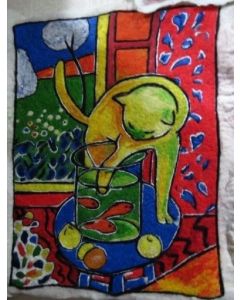TAPESTRY
In a narrow sense, the tapestry is called a product made by one of the manufactories founded in 1662 in Paris, Saint-Marcel. This workshop was originally the King's personal workshop.
It united the private institutions that make wallpaper, including Flemish Feyker m. Comans et al. A workshop founded by Planche in 1607. This enterprise was located in the building of the former studio of famous painters - Gobelins, from which comes the name of hand crafted carpet-paintings.
The tapestry was made of colored wool and silk thread (sometimes silk). They were hand knitted into separate pieces on a special knitting machine and then tied together with a thin silk thread. In the 19th century, tapestries were generally called wallpaper and thick canvases made by machine. The art of tapestry was revived in the 1930s.
The art of tapestry was established in Georgia in the 60s of the XX century. He contributed to the development of decorative applied and monumental decorative art during this period. The Georgian rug had a certain influence on the formation of the tapestry color and the understanding of flatness.
Georgian tapestry has an exhibition and public purpose. It is mostly classic, tightly woven. Along with the tradition of rectangular shape, there are also tapestries of different shapes.
At the turn of the XX-XXI centuries, the abstract decorative tapestry occupied more space. It has become a traditional form and is mainly characteristic of the works of young Georgian artists


Comments
Post a Comment